The ferret auditory cortex: descending projections to the inferior colliculus
- PMID: 16581982
- PMCID: PMC7116556
- DOI: 10.1093/cercor/bhj164
The ferret auditory cortex: descending projections to the inferior colliculus
Abstract
Descending corticofugal projections are thought to play a critical role in shaping the responses of subcortical neurons. Here, we examine the origins and targets of ferret auditory corticocollicular projections. We show that the ectosylvian gyrus (EG), where the auditory cortex is located, can be subdivided into middle, anterior, and posterior regions according to the pattern of cytochrome oxidase staining and immunoreactivity for the neurofilament antibody SMI32. Injection of retrograde tracers in the inferior colliculus (IC) labeled large layer V pyramidal cells throughout the EG and adjacent sulci. Each region of the EG has a different pattern of descending projections. Neurons in the primary auditory fields in the middle EG project to the lateral nucleus (LN) of the ipsilateral IC and bilaterally to the dorsal cortex and dorsal part of the central nucleus (CN). The projection to these dorsomedial regions of the IC is predominantly ipsilateral and topographically organized. The secondary cortical fields in the posterior EG target the same midbrain areas but exclude the CN of the IC. A smaller projection to the ipsilateral LN also arises from the anterior EG, which is the only region of auditory cortex to target tegmental areas surrounding the IC, including the superior colliculus, periaqueductal gray, intercollicular tegmentum, and cuneiform nucleus. This pattern of corticocollicular connectivity is consistent with regional differences in physiological properties and provides another basis for subdividing ferret auditory cortex into functionally distinct areas.
Conflict of interest statement
Figures
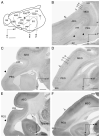
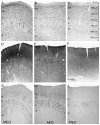
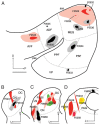
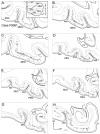
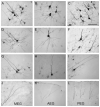
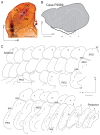
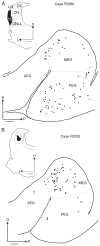

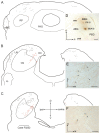
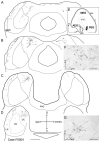
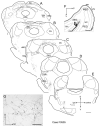
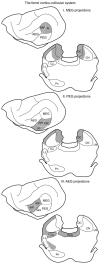
References
-
- Adams JC. Heavy metal intensification of DAB-based HRP reaction product. J Histochem Cytochem. 1981;29:775. - PubMed
-
- Aitkin LM, Kenyon CE, Philpott P. The representation of the auditory and somatosensory systems in the external nucleus of the cat inferior colliculus. J Comp Neurol. 1981;196:25–40. - PubMed
-
- Alitto HJ, Usrey WM. Corticothalamic feedback and sensory processing. Curr Opin Neurobiol. 2003;13:440–445. - PubMed
-
- Bajo VM, Moore DR. Central Auditory Processing: Integration of Auditory and Non-Auditory Information. Monte Verita/Ascona; Switzerland: 2002. May, [Accessed 20 March 2006]. Convergence of ascending and descending auditory pathways in the ferret inferior colliculus. 2002 12-15, http://www.unifr.ch/neuro/rouiller/pdf/abstractbookfinal.pdf.
-
- Bajo VM, Moore DR. Descending projections from the auditory cortex to the inferior colliculus in the gerbil, Meriones unguiculatus . J Comp Neurol. 2005;486:101–116. - PubMed

